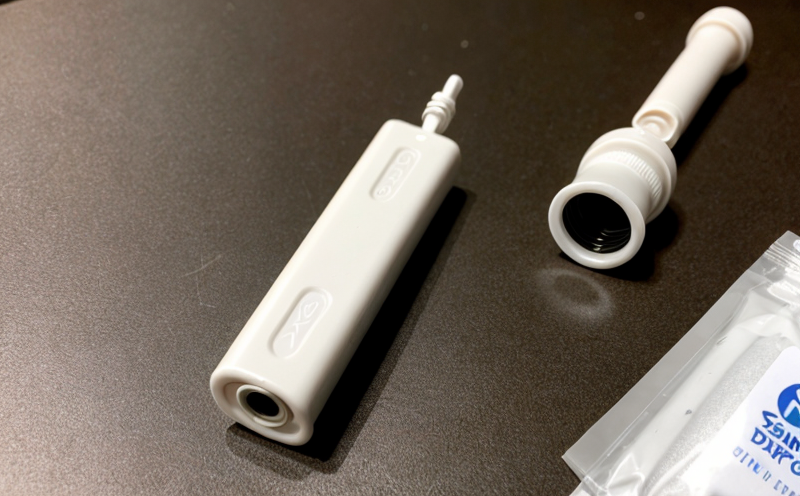Guidewire Kink Resistance Testing
In the realm of medical device testing, ensuring the integrity and reliability of guidewires is paramount. Guidewires are essential components in catheterization procedures, designed to navigate through complex vascular systems. A critical parameter that determines a guidewire's suitability for use is its kink resistance—the ability to withstand bending without permanent deformation or failure.
The kink resistance test evaluates the mechanical properties of guidewires under specified conditions, ensuring they meet regulatory requirements and perform reliably in clinical settings. The test focuses on the guidewire’s response when subjected to a defined bending stress, which simulates real-world use scenarios such as catheter manipulation within blood vessels.
The primary goal of this test is to identify any potential weaknesses or flaws that could lead to failure during critical procedures. This ensures patient safety and enhances the overall performance of medical devices. The testing process involves precise specimen preparation, controlled bending conditions, and meticulous measurement techniques to determine compliance with relevant standards.
Understanding the importance of this test requires an overview of its relevance in different stages of product development—from initial design through final production. By identifying potential issues early on, manufacturers can refine their designs, ensuring that guidewires meet stringent safety and efficacy requirements before they reach clinical use.
The testing process typically involves several key steps: specimen preparation, bending simulation, measurement, and evaluation against established criteria. Each step is crucial for obtaining accurate results that reflect the real-world performance of guidewires.
Specimen preparation involves selecting appropriate materials and dimensions to mimic the intended use of the guidewire. The specimens are then subjected to a series of bend cycles under controlled conditions, simulating the forces encountered during catheterization procedures. After each cycle, the specimen is inspected for any signs of kinking or deformation.
Measurement techniques play a vital role in assessing the results of the test. High-precision instruments are used to quantify the degree and frequency of bending required to induce kinks or failures. These measurements provide valuable insights into the guidewire's mechanical properties, enabling manufacturers to optimize design parameters for improved performance.
Compliance with relevant standards is essential in ensuring the reliability and safety of medical devices. The International Organization for Standardization (ISO) provides guidelines that guide testing procedures and acceptance criteria for guidewires. These standards ensure consistency across different laboratories and enhance confidence in the test results.
Applied Standards
| Standard | Description |
|---|---|
| ISO 13405-7:2016 | This standard specifies the test methods for determining the kink resistance of guidewires and similar devices. It provides detailed procedures for specimen preparation, testing conditions, and evaluation criteria. |
Environmental and Sustainability Contributions
- The kink resistance test ensures that guidewires are reliable under various environmental conditions, reducing the likelihood of failures during critical medical procedures.
- By identifying potential issues early in the development process, this testing contributes to minimizing waste by ensuring only robust designs reach production.
- Adherence to ISO standards promotes global consistency and reliability, which can lead to more efficient healthcare delivery systems worldwide.
Competitive Advantage and Market Impact
The ability to consistently demonstrate robust kink resistance is a significant advantage in the highly competitive medical device market. Compliance with ISO standards not only enhances product reliability but also builds trust among healthcare providers, patients, and regulatory bodies.
Manufacturers that excel in this area can differentiate their products by showcasing superior quality assurance practices. This can lead to increased market share and improved brand reputation. Moreover, the ability to provide reliable guidewires contributes positively to patient outcomes, thereby reinforcing a company's commitment to healthcare excellence.





